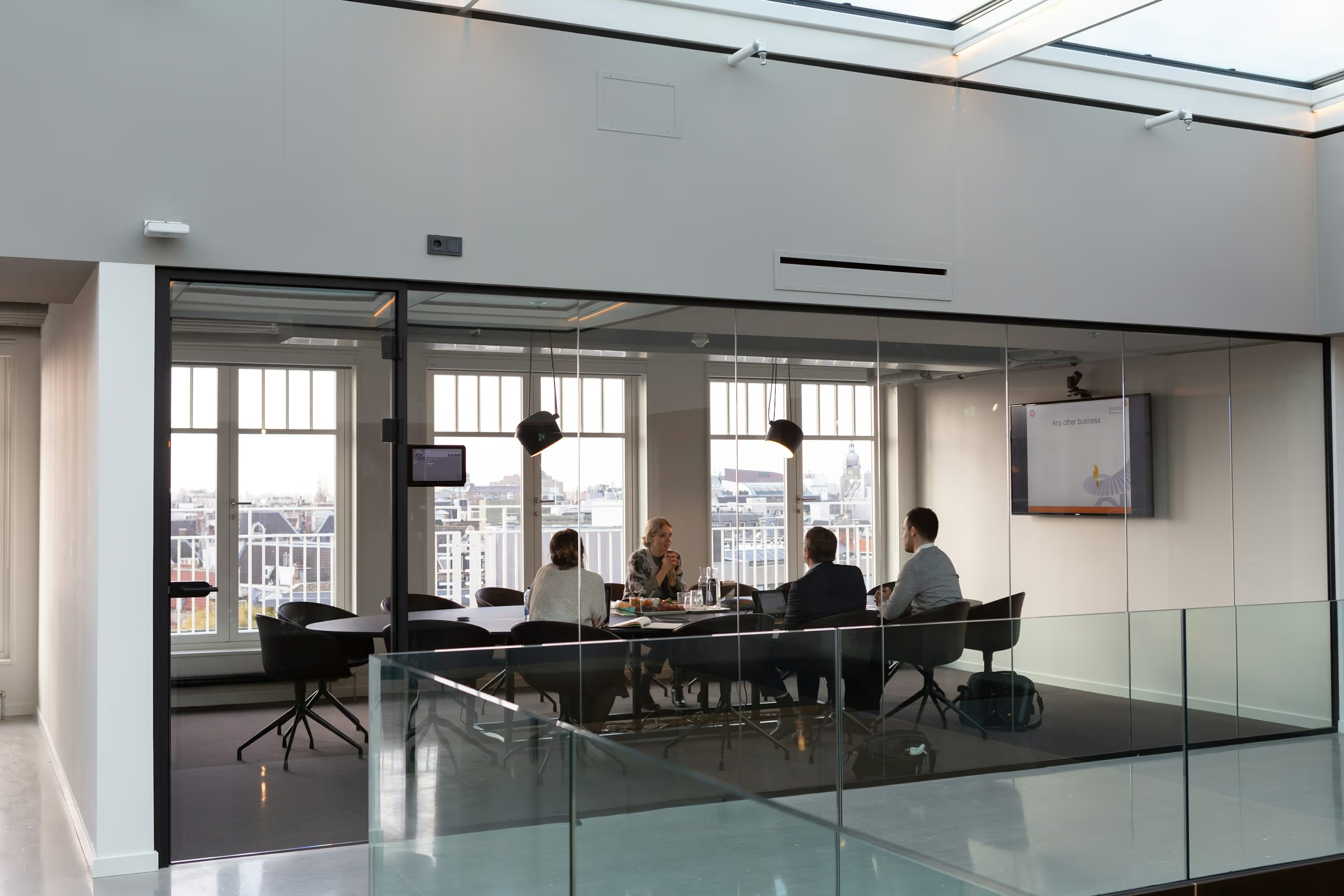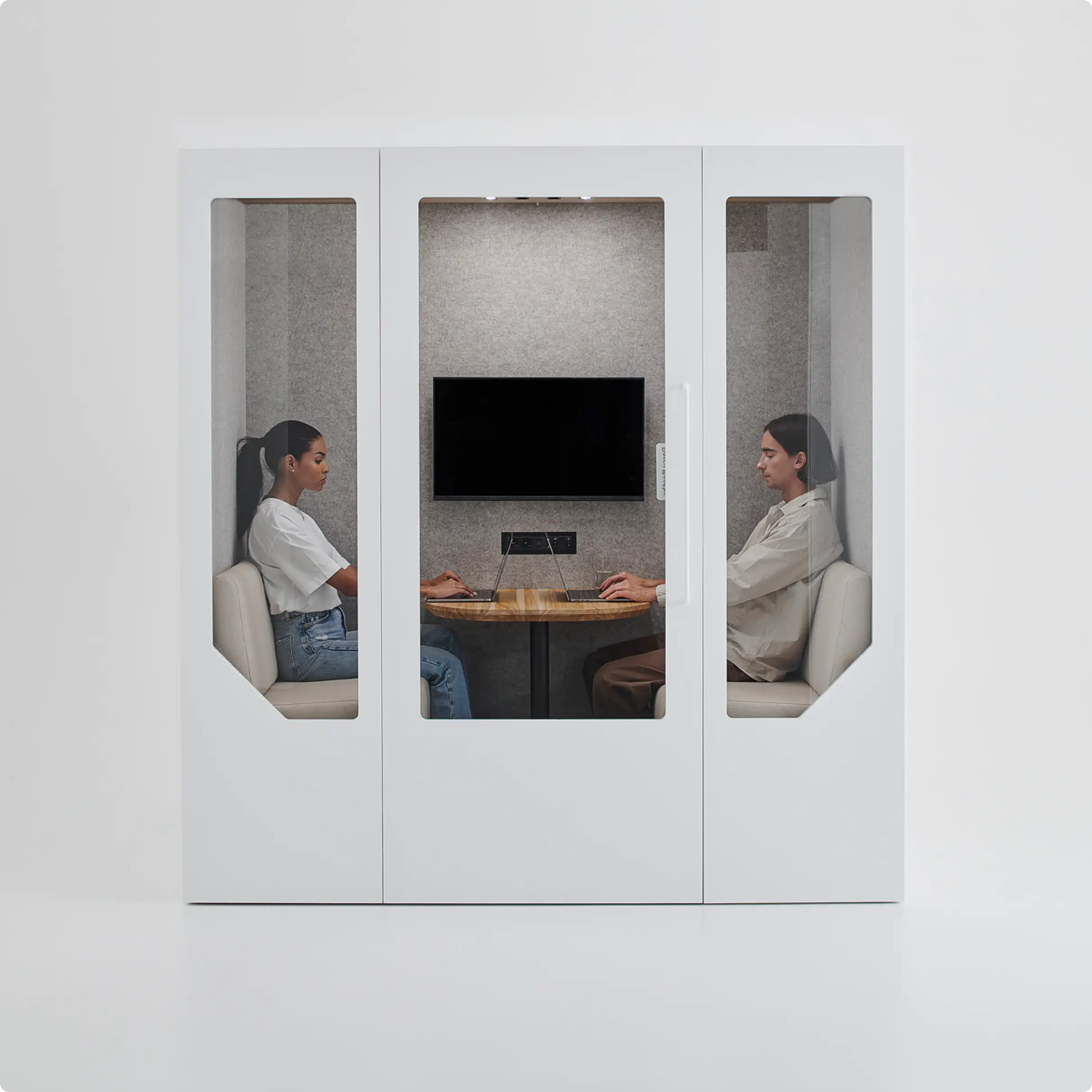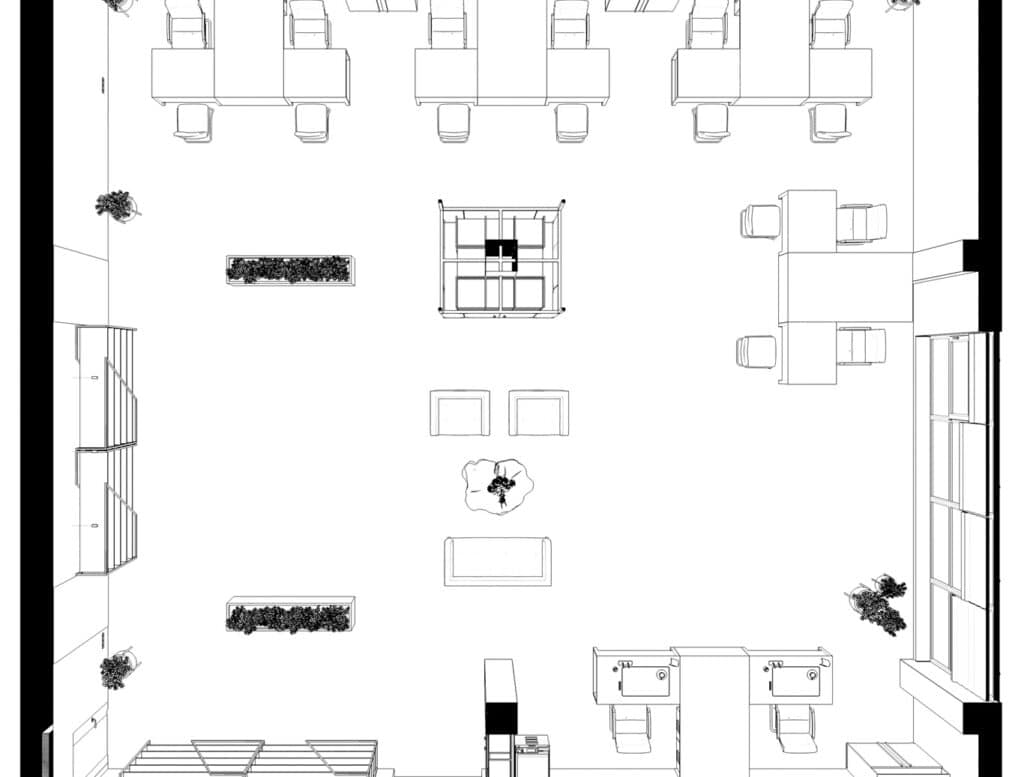You may not always enjoy being in them, but business meetings remain the backbone of organisational life.
Despite the rise of remote working, hybrid schedules and tools such as Microsoft Teams, the classic business meeting is still where strategic decisions are made, problems are solved, and teams stay aligned. The challenge for many businesses is ensuring that business meetings are efficient rather than draining, focused rather than chaotic, and cost-effective rather than unnecessarily over-engineered.
Whether your business meeting agenda is strategic, creative, or operational, the right meeting format and environment can transform the outcome. And yes — that includes knowing when a practical, well-priced privacy booth or meeting pod (from suppliers such as Persy Booths of course) is the smarter choice than over-investing in large, expensive meeting rooms.
Below, we explore the core types of meetings, the best practices for effective business meetings, and how to create a practical, supportive environment without overspending.
Key Takeaways from This Article
- The eight primary types of business meetings in the office — and when each format works best.
- Twelve best practices for effective business meetings, grounded in clarity, structure and practicality.
- How to balance functionality with cost when equipping meeting spaces, avoiding overspending on unnecessary equipment.
- Why buying direct from manufacturers — like Persy Booths — helps businesses avoid distributor mark-ups and get fast, friendly support.
- When meeting pods offer genuine value — and when a simple space will do the job just as well.

8 Types of Business Office Meetings
Business meetings come in many shapes and sizes. Choosing the right meeting format ensures the meeting objective is clear, the meeting’s agenda stays focused, and meeting participants stay aligned with the company’s goals. Here are the eight core business meeting types your organisation is likely to use.
1. Formal Meetings
Formal meetings include board meetings, compliance reviews, annual planning meetings and sessions where decision makers evaluate strategic decisions. These meetings rely on a planned agenda, strict structure and a clear set of meeting objectives. Because they frequently involve confidential information, a controlled acoustic environment is important. Instead of building expensive permanent rooms, many organisations now rely on office pods from Persy Booths — a direct-from-manufacturer option that avoids unnecessary distributor mark-ups.
2. Informal Meetings
Informal business meetings include quick catch-ups, collaborative conversations or spur-of-the-moment brainstorming sessions between team members. These are ideal for early-stage planning meetings, spontaneous idea generation or working out potential challenges. They usually have a looser meeting format and don’t always need a complete meeting agenda, but they do benefit from a clear meeting objective and a short, focused duration.
3. Decision-Making Meetings
A decision making meeting is designed to evaluate evidence, review agenda items, explore potential solutions and commit to a final path of action. Because these meetings often involve commercially sensitive material, many businesses are turning to private acoustic spaces — such as a privacy booth like the Persy Four — to keep conversations focused and confidential.
4. Planning Meetings
Planning meetings allow project managers and team members to map out next steps, allocate resources and clarify the people responsible for given tasks. They work best with structured agenda items, clear objectives and documented planning details. These meetings are essential for ensuring everyone stays on the same page, especially when multiple employees are involved.
5. Project Status & Update Meetings
Project status meetings review progress reports, evaluate project status and identify any risks. These meetings help ensure that planning meetings and problem solving meetings remain grounded in current information. Because they often involve several agenda items, a planned agenda is particularly helpful. When team members know exactly what they’re reporting on, such meetings go more smoothly.
6. Innovation Meetings
Innovation meetings encourage idea generation, diverse perspectives and free-flowing new ideas from meeting participants. Such meetings provide space for creativity, problem solving, and exploration of potential solutions. Because innovation meetings can be noisy or involve animated discussion, many businesses use smaller breakout pods or quiet spaces to help each separate meeting remain productive without disturbing colleagues.
7. Team-Building Meetings
Team building meetings strengthen personal relationships, improve collaboration and help create an established team culture. These team meetings may involve activities that fall outside typical agenda items — but meeting goals remain important. Strong team building supports effective collaboration later on in more formal meetings.
8. Problem-Solving Meetings
A problem solving meeting is used to address challenges head-on, with the group evaluating potential solutions, assigning the person responsible and identifying next steps. These meetings rely heavily on focused discussions. A 2-person meeting pod such as the Persy Two helps keep conversations in business meetings private and direct, without overspending on dedicated meeting rooms.

12 Best Practices for Running Effective Business Office Meetings
To run truly effective business meetings, businesses need clarity, structure and thoughtful meeting objectives. Below are 12 best practices that help create successful meetings across all meeting types.
1. Define the Meeting Objective Clearly
Every business meeting must start with a clear goal. Without clarity, agenda items drift, meeting participants go off topic, and targets are missed. A defined objective keeps discussions aligned with the company’s goals and helps ensure the primary aim is met.
2. Create and Share a Structured Agenda
A meeting’s agenda should be shared before the meeting starts. A planned agenda allows team members to prepare progress reports or planning details ahead of time. This improves the quality of discussion and reduces wasted meeting time. According to Harvard Business Review, excessive meetings without clear objectives and agendas are a major cause of workplace burnout and reduced productivity:
3. Invite Only the Right Participants
The most successful business meetings involve only the right participants — individuals directly responsible for decisions, updates or action items. Over-inviting slows down decision making and reduces effective collaboration. When employees involved understand why they are present, discussions become clearer and more meaningful.
4. Choose the Right Format (In-Person, Virtual, Hybrid)
Different meeting types require different formats. A Zoom meeting works for a quick follow up meeting, while an in-person session is better for decision making meetings or problem solving meetings. For such meetings, a Persy Work pod offers the right balance of privacy, practicality and cost.
5. Automate Scheduling and Reminders
Automated scheduling tools help ensure meetings start on time. These systems reduce conflicts, help with schedule meetings across teams, and keep team members aligned. Automating reminders also reduces the admin burden for the designated facilitator or project manager.
6. Establish Ground Rules for Productivity
Ground rules — such as timeboxing agenda items, avoiding interruptions, and sticking to the core goal — help maintain focus. When rules are clear, effective meetings feel shorter, sharper and more purposeful.
7. Encourage Participation and Feedback
To create diverse perspectives and new ideas, leaders must ensure all meeting participants feel comfortable contributing. Encouraging quieter colleagues enhances effective collaboration and increases the likelihood of successful meetings.
8. Assign Clear Action Items and Responsibilities
Every agenda item should end with a clear action: who is directly responsible, what needs doing and by when. This ensures the next meeting builds on actual progress rather than repeated conversations.
9. Take Accurate Meeting Notes
Accurate notes support accountability, clarify decisions and help with follow up email summaries. They also provide a written record when problem solving meetings or planning meetings need to revisit earlier choices.
10. Use Post-Meeting Follow-Ups
A follow up email reinforces the meeting’s objectives, clarifies decisions and keeps everyone on the same page. It reduces misinterpretation and strengthens effective business meetings over time.
11. Gather Feedback to Improve Future Meetings
As Forbes highlights in its research on better meetings, improving meeting structure requires continuous feedback loops following all business meetings. Asking meeting participants about potential challenges, agenda items or meeting format gives leaders clarity on how to refine future meetings.
12. Leverage Meeting Technology
Modern tools support analytics, collaboration, and clearer decision making in in-person meetings, while video conferencing and audio tools enhance virtual meetings. Take care to invest in the technology that is right for you, by striking the right balance of cost versus functionality.

Conclusion: Running Productive Business Office Meetings
These meetings matter — but only when they are structured, purposeful and cost-effective. Successful business meetings require clear objectives, a focused meeting agenda and the right environment. That doesn’t mean overspending on full meeting-room installations. Often, buying direct from manufacturer solutions like Persy Booths helps businesses save money, avoid distributor mark-ups and get fast, friendly and practical support.
With the right preparation and practical meeting environments, many businesses can transform their meetings into moments of clarity, progress and genuine innovation.








.avif)



